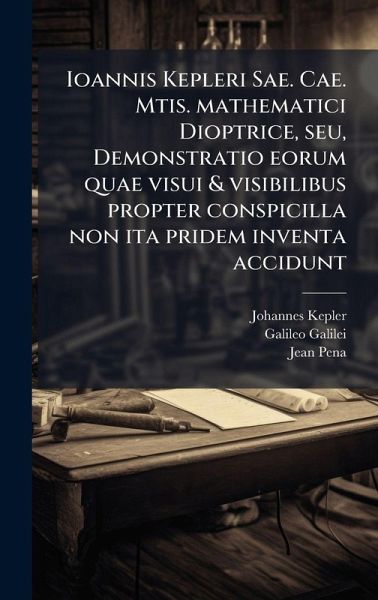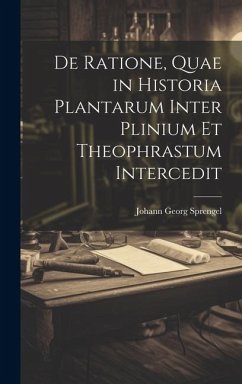
Ioannis Kepleri Sae. Cae. Mtis. mathematici Dioptrice, seu, Demonstratio eorum quae visui & visibilibus propter conspicilla non ita pridem inventa accidunt
Versandkostenfrei!
Versandfertig in über 4 Wochen
29,99 €
inkl. MwSt.
Weitere Ausgaben:

PAYBACK Punkte
15 °P sammeln!
Ioannis Kepleri Sae. Cae. Mtis. mathematici Dioptrice, seu, Demonstratio eorum quae visui & visibilibus propter conspicilla non ita pridem inventa accidunt, published in 1611, represents a foundational work by Johannes Kepler on the theory of optics. This significant treatise explores the behavior of light as it passes through lenses, particularly in the context of newly invented telescopes. Including correspondence from Galileo Galilei, the text provides insights into the advancements in observational astronomy made possible by these optical instruments. Kepler's "Dioptrice" not only demonstr...
Ioannis Kepleri Sae. Cae. Mtis. mathematici Dioptrice, seu, Demonstratio eorum quae visui & visibilibus propter conspicilla non ita pridem inventa accidunt, published in 1611, represents a foundational work by Johannes Kepler on the theory of optics. This significant treatise explores the behavior of light as it passes through lenses, particularly in the context of newly invented telescopes. Including correspondence from Galileo Galilei, the text provides insights into the advancements in observational astronomy made possible by these optical instruments. Kepler's "Dioptrice" not only demonstrates his profound understanding of mathematics and physics but also his crucial role in the scientific revolution, offering a detailed examination of visual perception and the workings of optical devices. This Latin text is a vital resource for understanding the history of science, the development of optics, and the early use of telescopes in astronomical discovery. This work has been selected by scholars as being culturally important, and is part of the knowledge base of civilization as we know it. This work was reproduced from the original artifact, and remains as true to the original work as possible. Therefore, you will see the original copyright references, library stamps (as most of these works have been housed in our most important libraries around the world), and other notations in the work. This work is in the public domain in the United States of America, and possibly other nations. Within the United States, you may freely copy and distribute this work, as no entity (individual or corporate) has a copyright on the body of the work. As a reproduction of a historical artifact, this work may contain missing or blurred pages, poor pictures, errant marks, etc. Scholars believe, and we concur, that this work is important enough to be preserved, reproduced, and made generally available to the public. We appreciate your support of the preservation process, and thank you for being an important part of keeping this knowledge alive and relevant.












